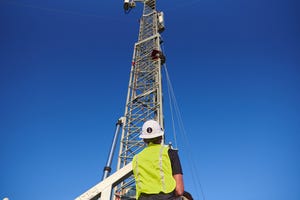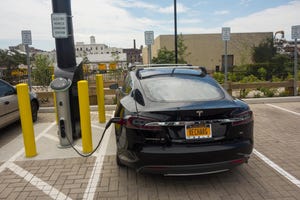
Also in today's EMEA regional roundup: Nokia sets up AI use case library; French investment rises in 2020; Openreach opts for Ciena gear.
Ericsson has teamed up with Leonardo, an Italian cybersecurity company, to develop new 4G- and 5G-based services for the public safety, critical infrastructure and industrial sectors. The plan is to use the technologies to deliver faster and more secure communications to the likes of firefighters and emergency medical service personnel. It is envisaged that the fruits of their collaboration will support more advanced applications and mission-critical services such as real-time video, "massive use" of sensors, and augmented reality. For certain projects, the collaboration will also be open to communications service providers and other partners.
Nokia has set up what it claims is the world's first "AI use case library on public cloud for telecoms providers." The idea is that, through this Microsoft Azure-based system, those same providers can deploy AI uses cases more quickly and more securely, completing the necessary data setup in four weeks. Australian mobile operator TPG was the first commercial adopter of the system, using a local instance of Microsoft Azure.
Still in Nokialand, the vendor has added to its AirScale small cells range for indoor and outdoor 5G coverage. The new kids on the block are micro Remote Radio Heads (mRRH), indoor Radio (ASiR) offerings, mmWave products and the Nokia Smart Node femtocell. See this press release for technical details and executive-quote boosterism.
The latest annual review from Arcep, the French communications regulator, reveals that in 2020 operators' investments reached €11.5 billion (US$14 billion) – excluding spending on 5G spectrum – an 8.1% increase year-on-year. With spending on 5G spectrum taken into account, operators' investments totaled €14.3 billion ($17.5 billion). According to Arcep, the rise in spending can be attributed chiefly to increased investment in FTTH deployments, with an additional 5.8 million premises being passed with fiber during the year.
Openreach, the semi-autonomous network access arm of UK incumbent operator BT, has opted for Ciena gear to increase its network capacity and performance. That gear includes routing and switching products and WaveLogic Ai-based coherent optical platforms. Openreach is also using Ciena's managed services to help with network deployment and service rollout.
UK fiber rollout latest: CityFibre has partnered with New Gorbals Housing Association to bring full fiber to more than 4,500 social housing properties owned and managed by the provider across the southside of Glasgow; TalkTalk is introducing full-fiber services in Leeds, using the networks of CityFibre and Openreach.
Project XCelerate, a BT-led project exploring the commercial use of connected drones, is moving onto its next phase, with flight trials set to be conducted along an 8km-long drone route this summer. While the trials will initially run in segregated airspace, they will help stakeholders see the various connectivity technologies come together and showcase how the "drone zone" concept works.
— Paul Rainford, Assistant Editor, Europe, Light Reading
Read more about:
EuropeAbout the Author(s)
You May Also Like












